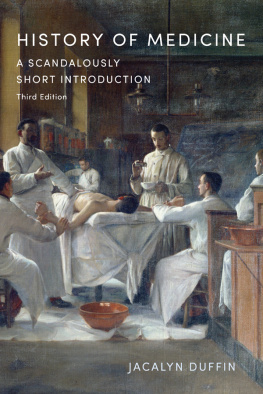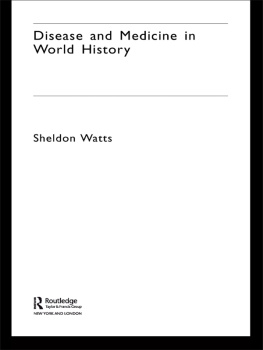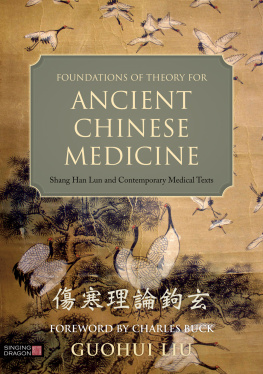The third edition has been completely revised to highlight new scholarship on the past and incorporate significant medical events of the most recent decade including new technologies, drug shortages, medical assistance in dying, and recent outbreaks of infectious diseases such as Ebola, H1N1, Zika, and COVID-19. The book is organized around themes of scientific and clinical interest, such as anatomy, physiology, pharmacology, surgery, obstetrics, medical education, health-care delivery, and public health. It includes a chapter on how to approach research in medical history, updated with new resources. History of Medicine is sensitive to the power of historical research to inform current health-care practice and enhance cultural understanding.
JACALYN DUFFIN is a physician, historian, and Professor Emerita and Hannah Chair of the History of Medicine at Queens University.
HISTORY OF MEDICINE
A SCANDALOUSLY SHORT INTRODUCTION
Third Edition
JACALYN DUFFIN
UNIVERSITY OF TORONTO PRESS
Toronto Buffalo London
University of Toronto Press 2021
Toronto Buffalo London
Second edition published 2010
First edition published 1999
utorontopress.com
Printed in Canada
ISBN 978-1-4875-0916-3 (cloth) ISBN 978-1-4875-3984-9 (EPUB)
ISBN 978-1-4875-0917-0 (paper) ISBN 978-1-4875-3983-2 (PDF)
Library and Archives Canada Cataloguing in Publication
Title: History of medicine : a scandalously short introduction / Jacalyn Duffin.
Names: Duffin, Jacalyn. author.
Description: Third edition. | Includes bibliographical references and index.
Identifiers: Canadiana (print) 20210152214 | Canadiana (ebook) 20210152249 | ISBN 9781487509170 (paper) | ISBN 9781487509163 (cloth) | ISBN 9781487539849 (EPUB) | ISBN 9781487539832 (PDF)
Subjects: LCSH: Medicine History.
Classification: LCC R131.D83 2021 | DDC 610.9 dc23
Excerpts of material written by L.M. Montgomery are published with the permission of David Macdonald and Ruth Macdonald, who are the heirs of L.M. Montgomery.
University of Toronto Press acknowledges the financial assistance to its publishing program of the Canada Council for the Arts and the Ontario Arts Council, an agency of the Government of Ontario.

For my students
past, present, and future
Contents
I wrote the first edition of this book in the late 1990s because my medical students repeatedly asked me to publish my lectures. I hesitated for a long time because of my limited expertise. They argued that it could serve as a guide for students, interested practitioners, and nonhistorian instructors wishing to incorporate history into health-care teaching. I hoped that it might also demystify medicine for students in other domains, such as history, philosophy, and sociology although the thematic structure is unusual for a humanities course. But as soon as I began trying to turn those comfortably private, oral presentations into public print, I ran up against my own lack of erudition (as predicted) and was humbled by the numerous places where I risked falling into the very traps described in . Without the security of fudging footnotes and scholarly apparatus, I began to feel exposed on alien turf every sentence, a minefield; each choice of word, a little bomb waiting to explode. This feeling has not diminished.
Reviewers were kind, and Scandalous enjoyed more success than I had imagined. Several readers wrote to suggest additions or correct errors. Although it had originally been unabashedly aimed at Canadians, I was surprised (and perhaps the publisher was too) to discover that it found readers, course assignments, reprintings, and translations in the rest of North America, Europe, and Asia. Therefore, the second edition of 2010 aimed to serve a wider audience with a new chapter on public and international health, while the examples from Canada were joined by many more from other places, especially but not only Britain and the United States. The suggested readings were placed online. Nevertheless, some reviewers quipped that the book was no longer scandalously short, though it was and still is shorter than most comprehensive histories. What had Scandalous become if not short? Scandalously clinical? Political? Personal?
For this third edition, the title remains, although the length has expanded yet again. It has been a busy decade in medicine and in its history. Revising a medical history during a pandemic has been a quixotic task. Numbers, information, and rules keep changing, and I am haunted by a strange impression of dj vu blended with hubris that it is too soon to be writing about something that is, as yet, incomplete. We cannot see over the edge to the other side. Journalists are constantly pestering historians for lessons learned and for reassurance about our relative safety now compared to distant times of plague, influenza, or polio. On the other hand, the continuities with the past are striking, and at any given moment, our human trajectory is never really over.
In dealing with the updates and suggestions, a hundred new names or topics are mentioned some from well before the twenty-first century. A new chapter on the rise of patient-centered medicine emphasizes the influence of rights movements for race, Indigenous peoples, disability, and sexual orientation. And, of course, COVID-19 demanded changes in almost every chapter.
Some students do not like this book because it is, well, a book. Teaching methods of lectures and readings, where my work originated, are now called traditional, even pass, and in pandemic times, online learning has become the norm. Library stacks are echoing and empty, and shelves of books and journals have been replaced with computer terminals. Scholars and medical practitioners including me conduct their research through the instant gratification of wondrous Google and burgeoning databases; information comes in concise bullets, and attention spans are growing shorter.
But electronic versions of this book are now available, and the updated, much expanded Suggestions for Further Reading persists open-access on the web (at http://www.histmed.ca). Whether it be on paper or online, this not so scandalously short book was never intended to be read all at once, or in sequence. Each (relatively) brief chapter can be selected in any order at any time. The goal is to spark questions, stimulate curiosity, and orient the search beyond these pages. And if the chapter subjects do not satisfy, perhaps the index will.
Being a historian as well as a physician, however, I happily draw your attention to the remarkable, venerable technology of print on paper. Diverse, durable, portable, and lovely to hold, touch, and smell, books can go with you on canoe trips, or into the bath, without electricity or fear of shock. And in the end, unlike the disposable flux of a website, they stand as testimony to a moment in time and space, becoming historical sources themselves. Books may be an endangered species, but for nearly 600 years they conveyed so much medicine that it seems only right that a book should be the vehicle for its past.









